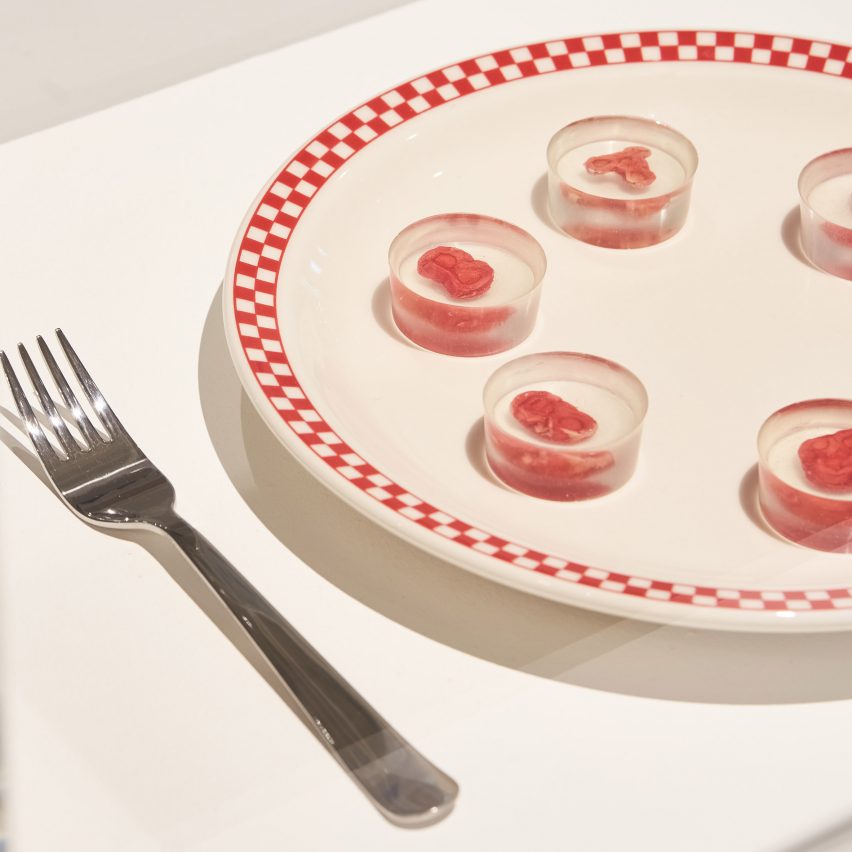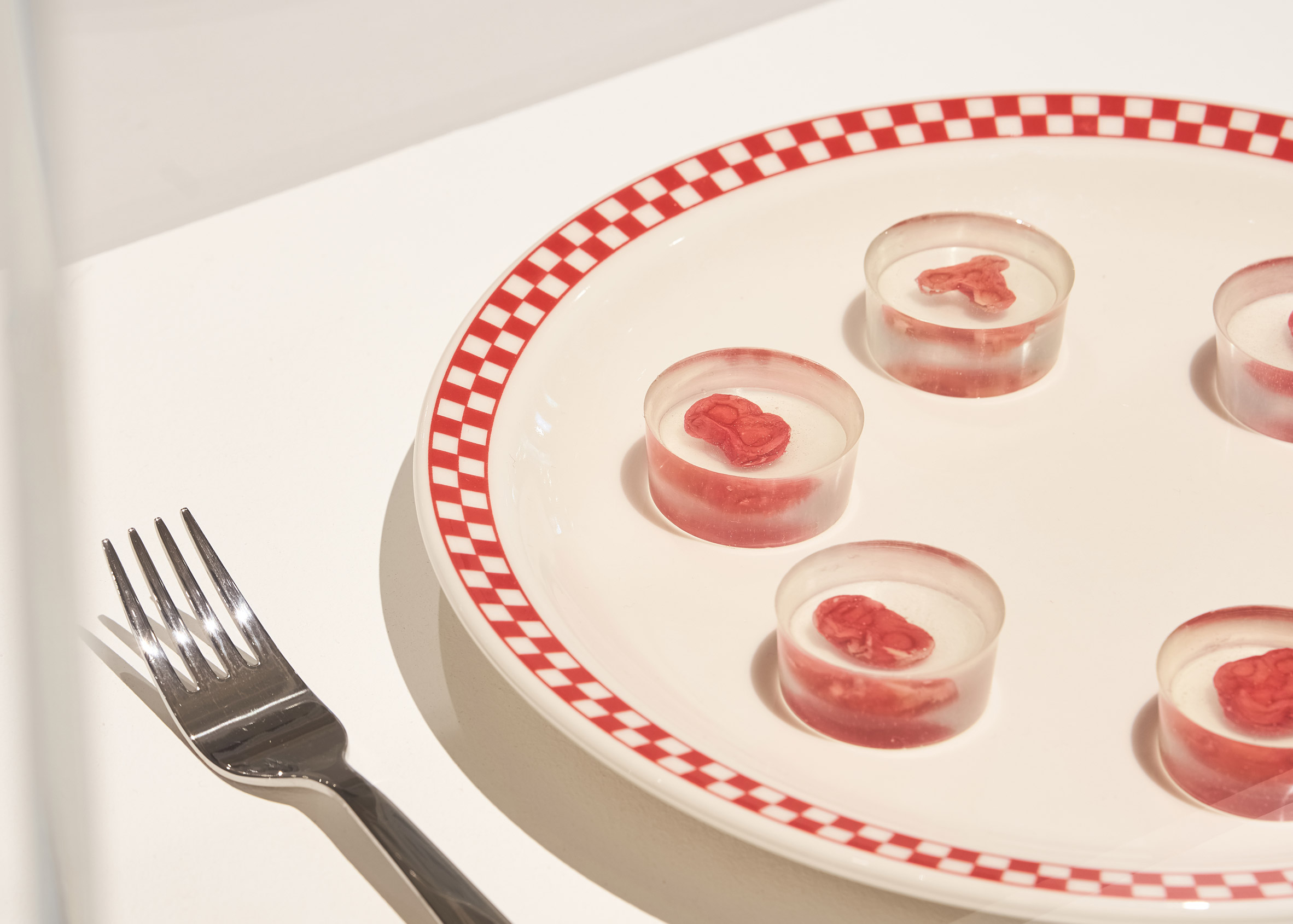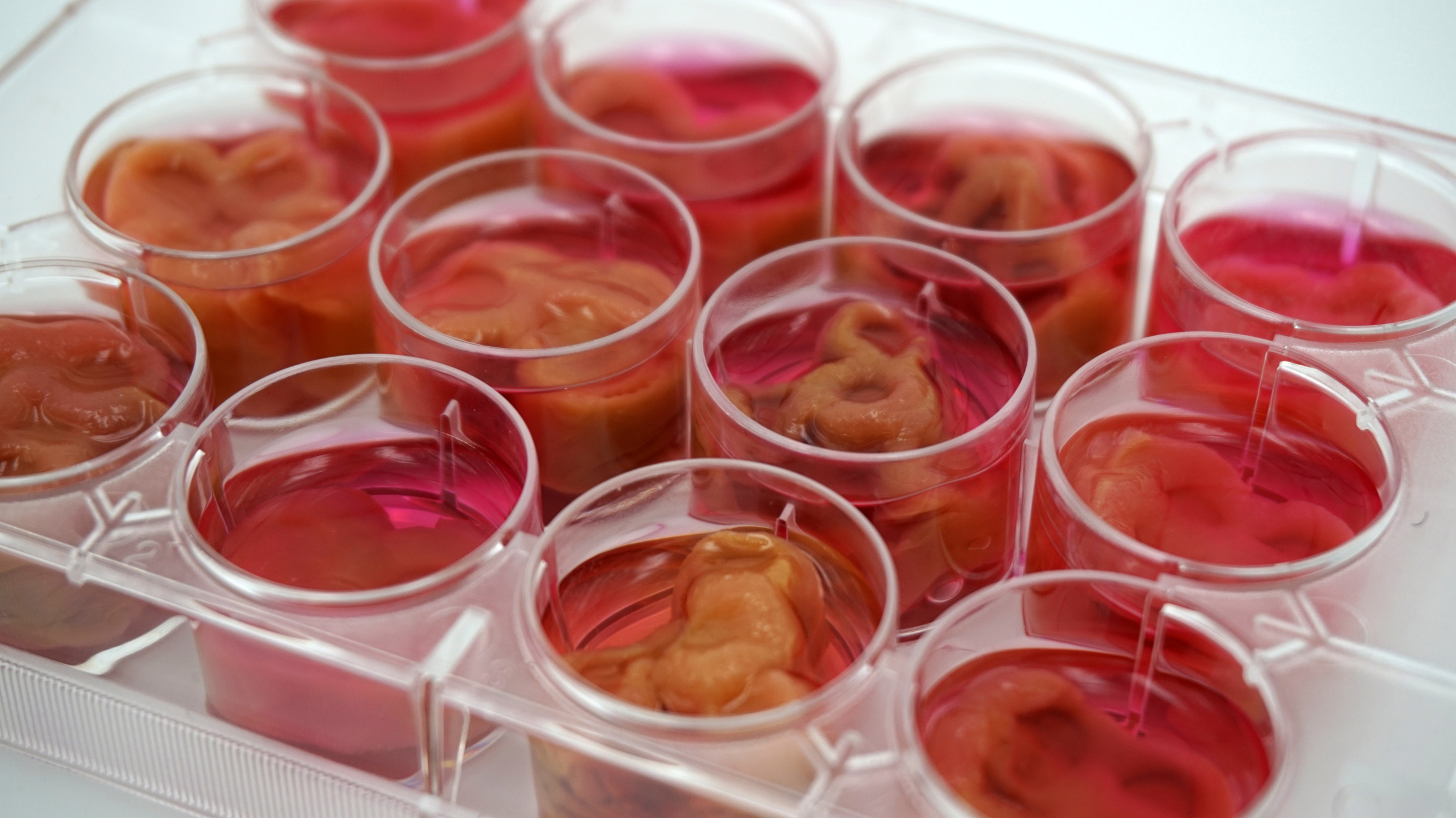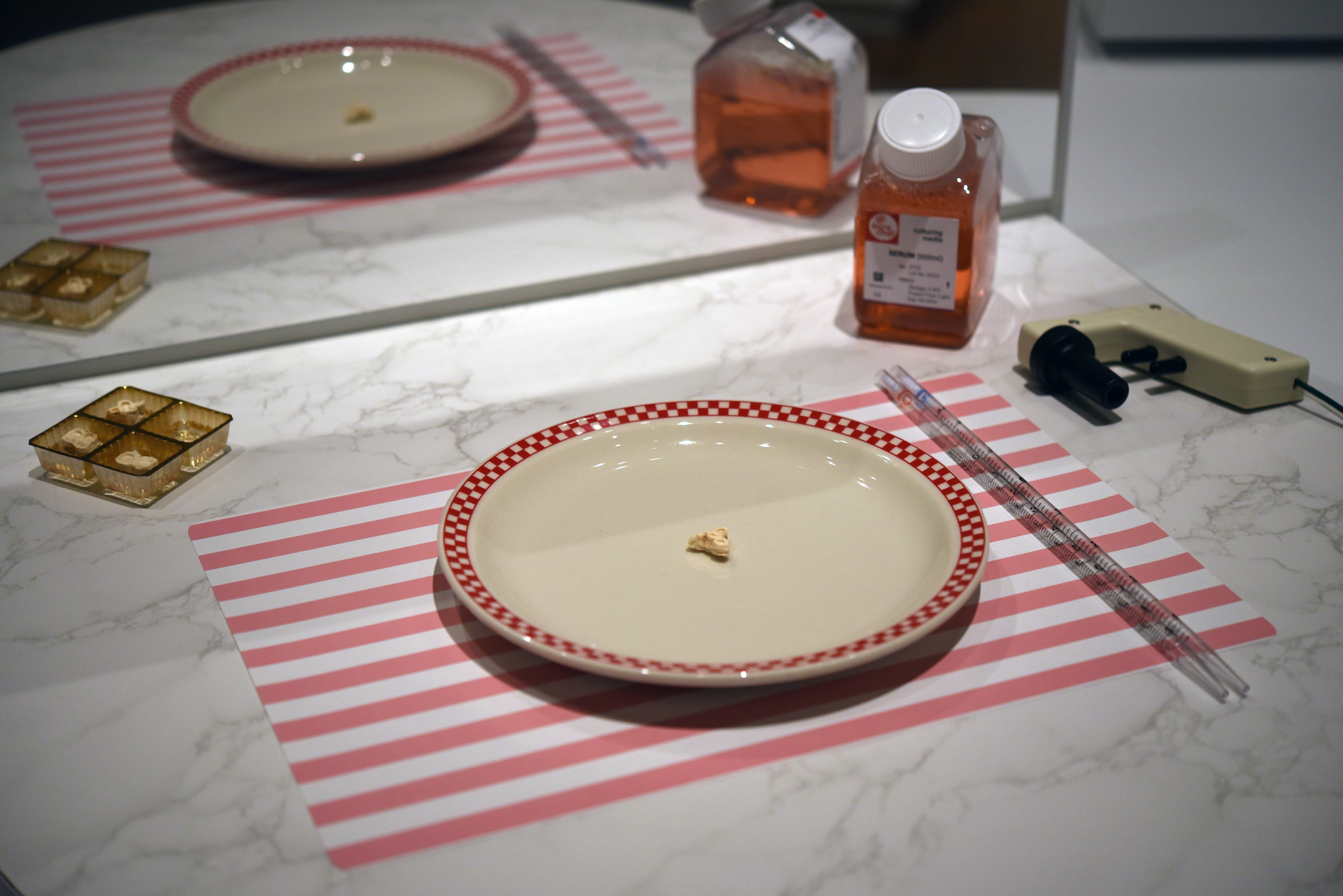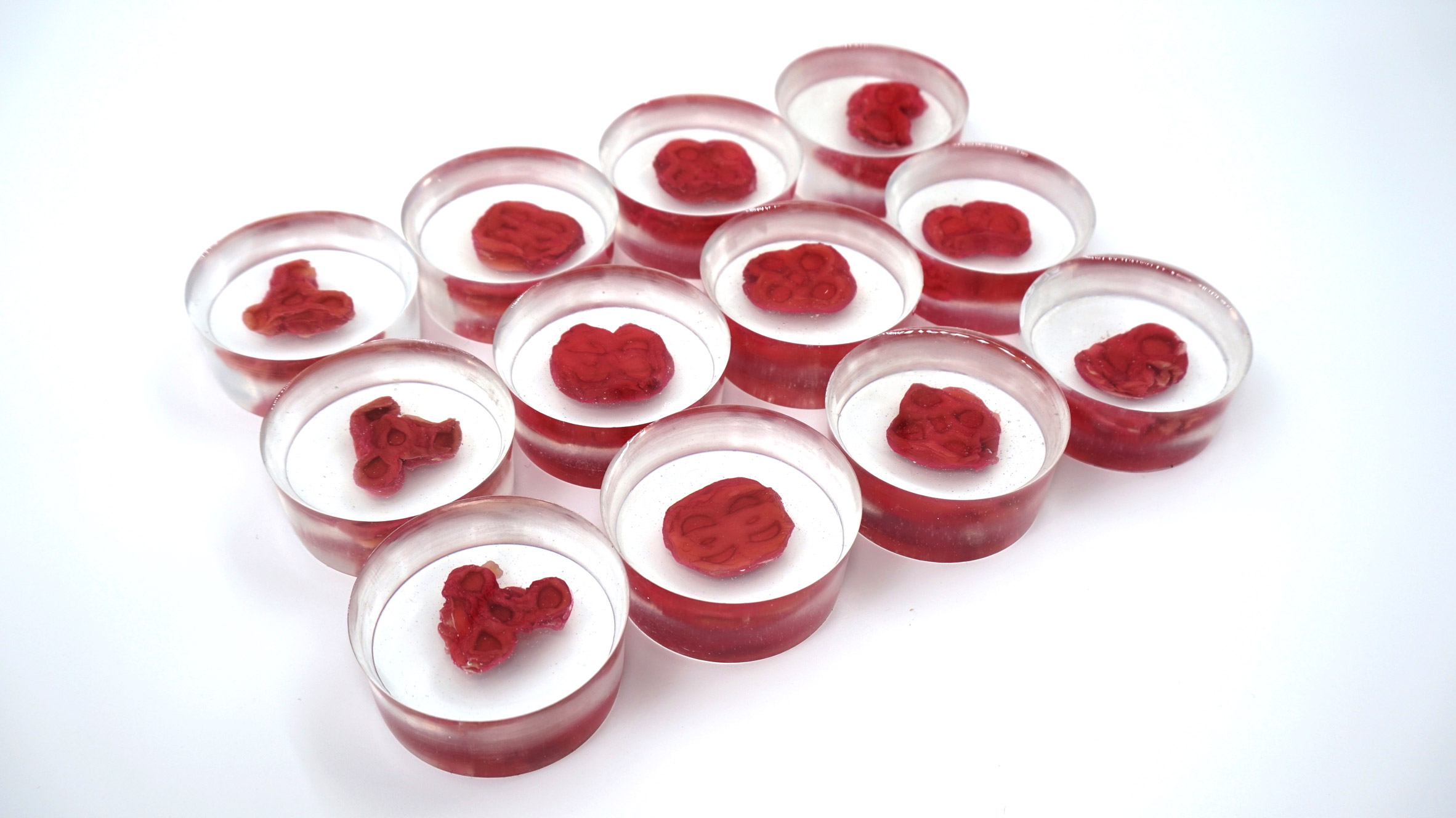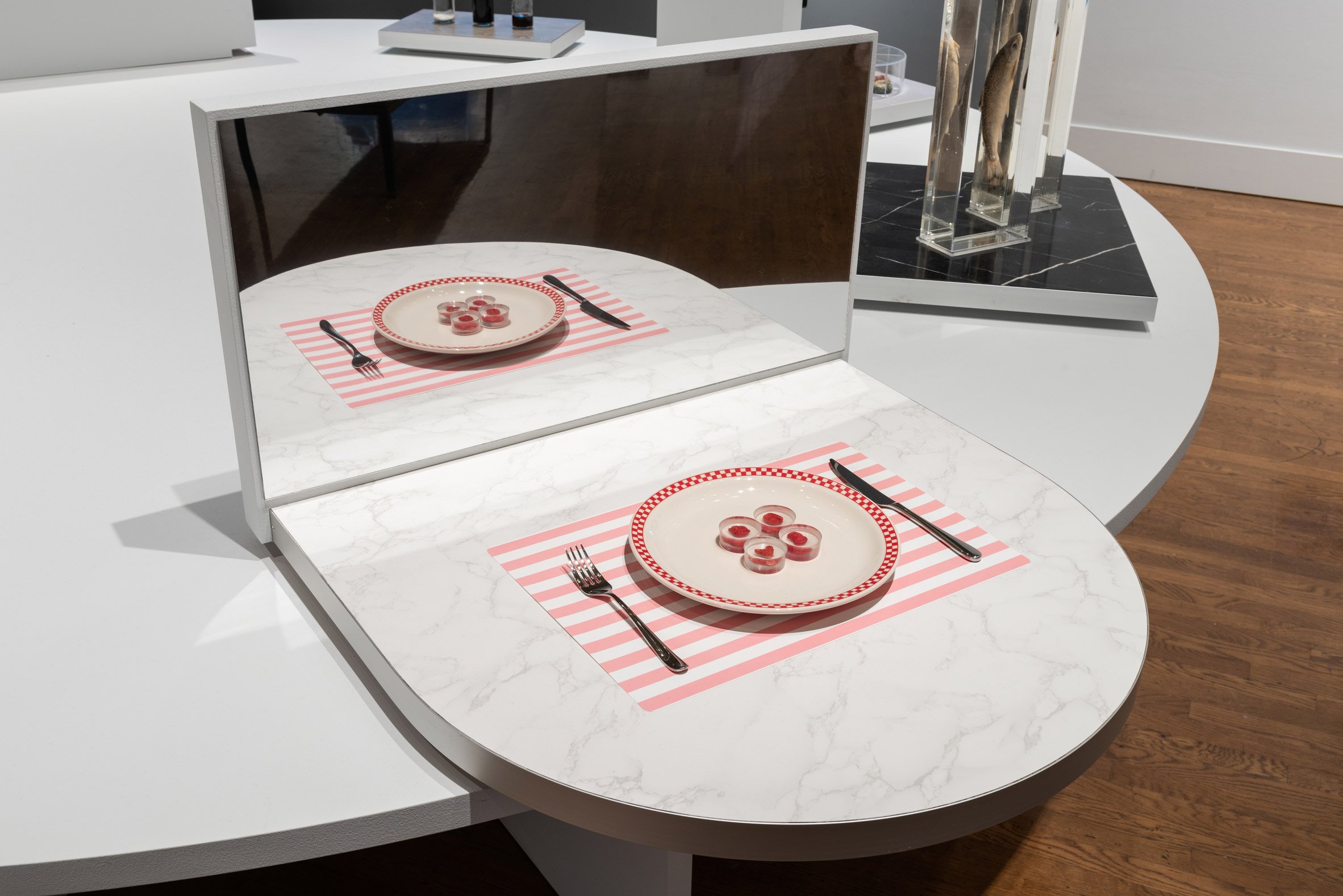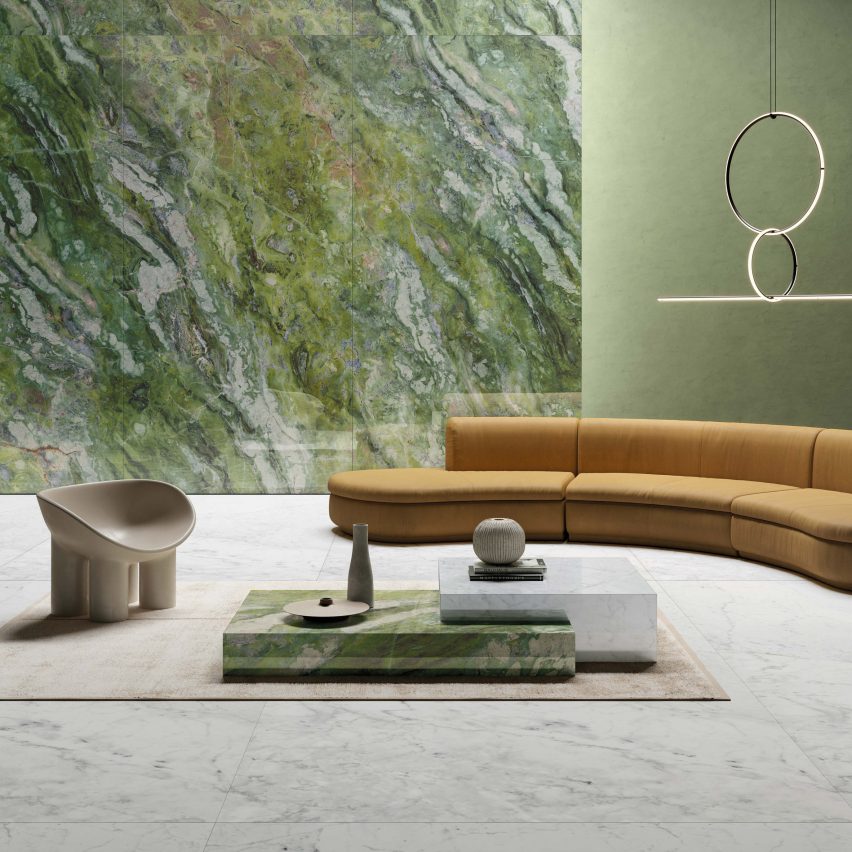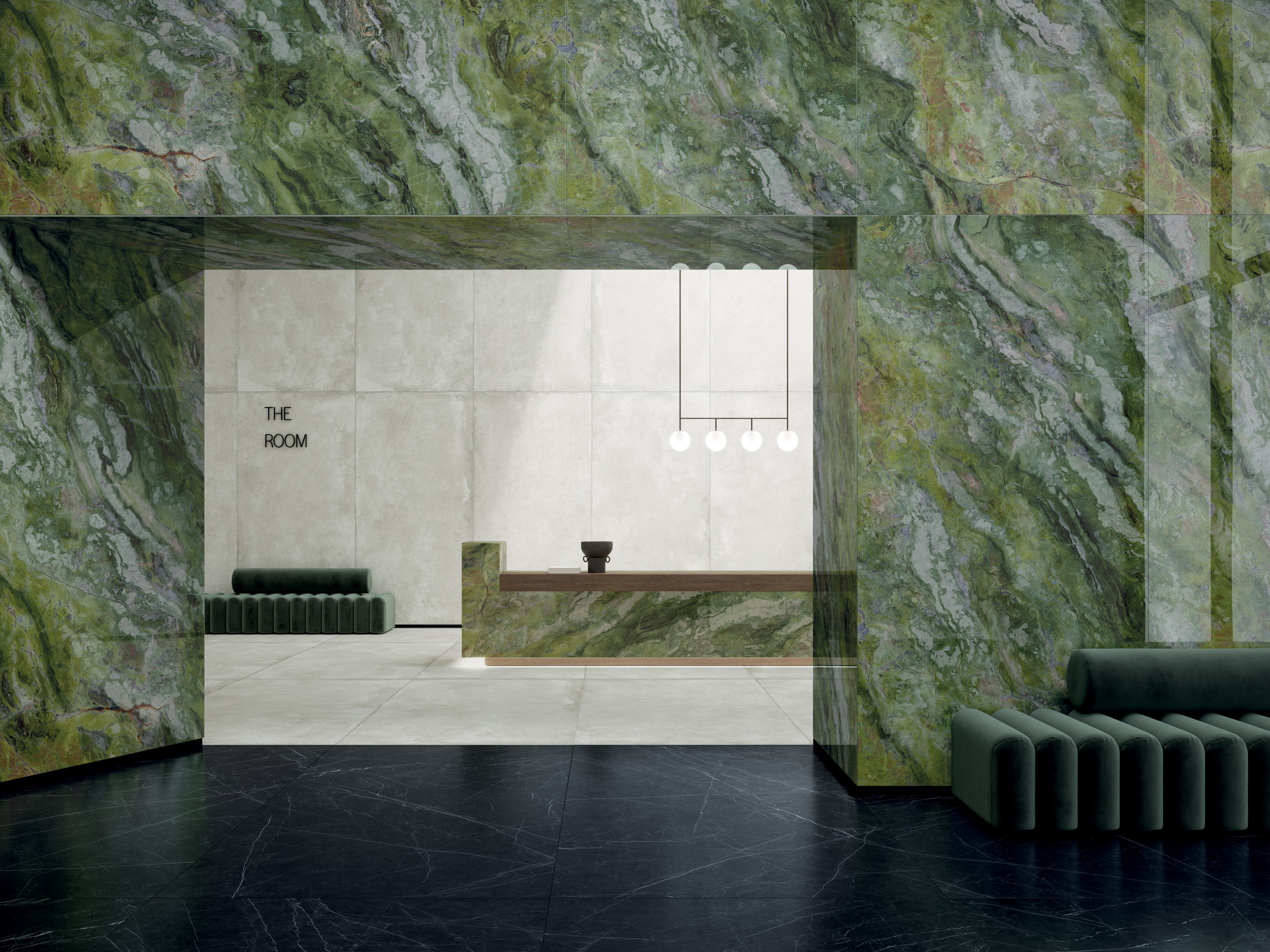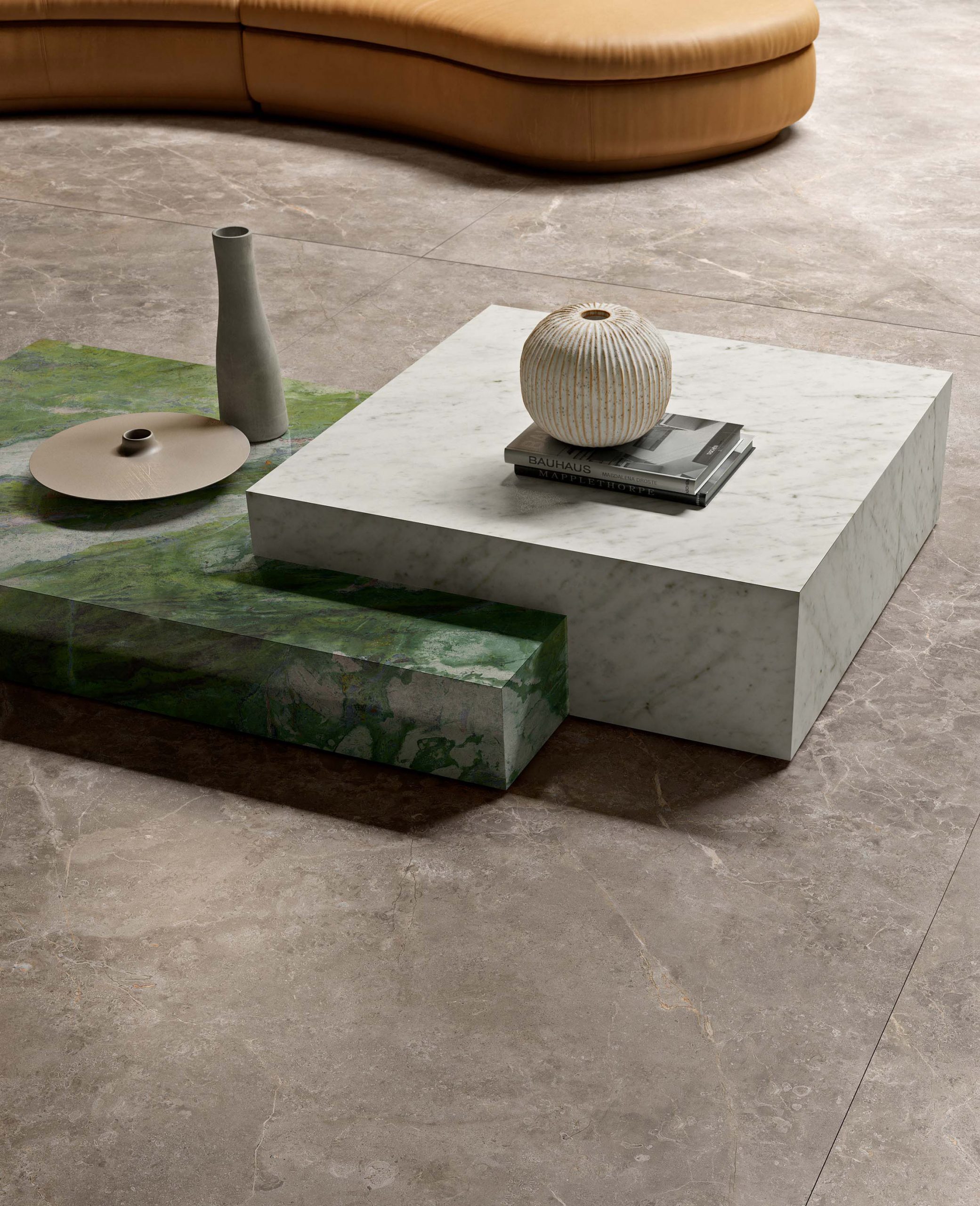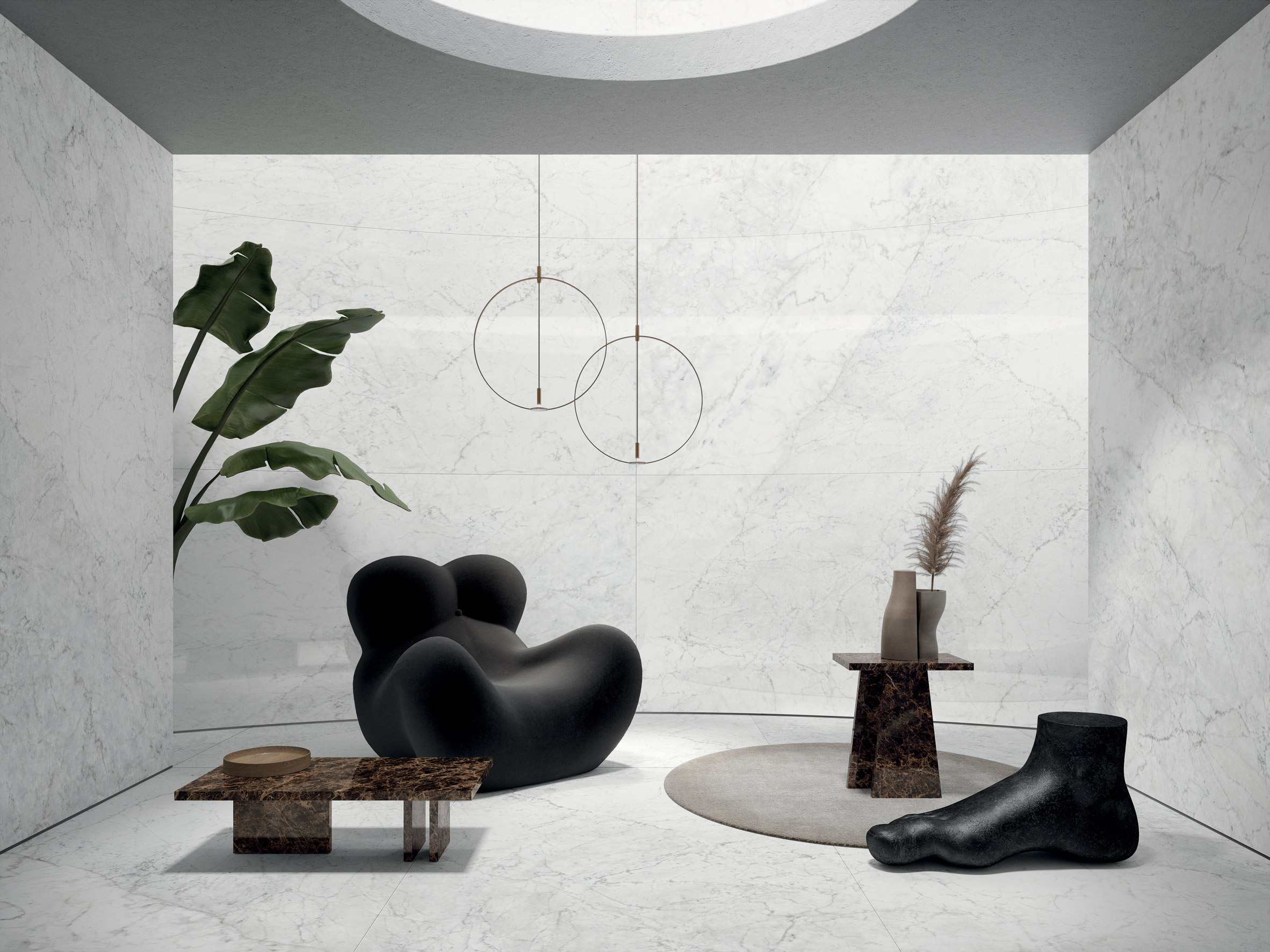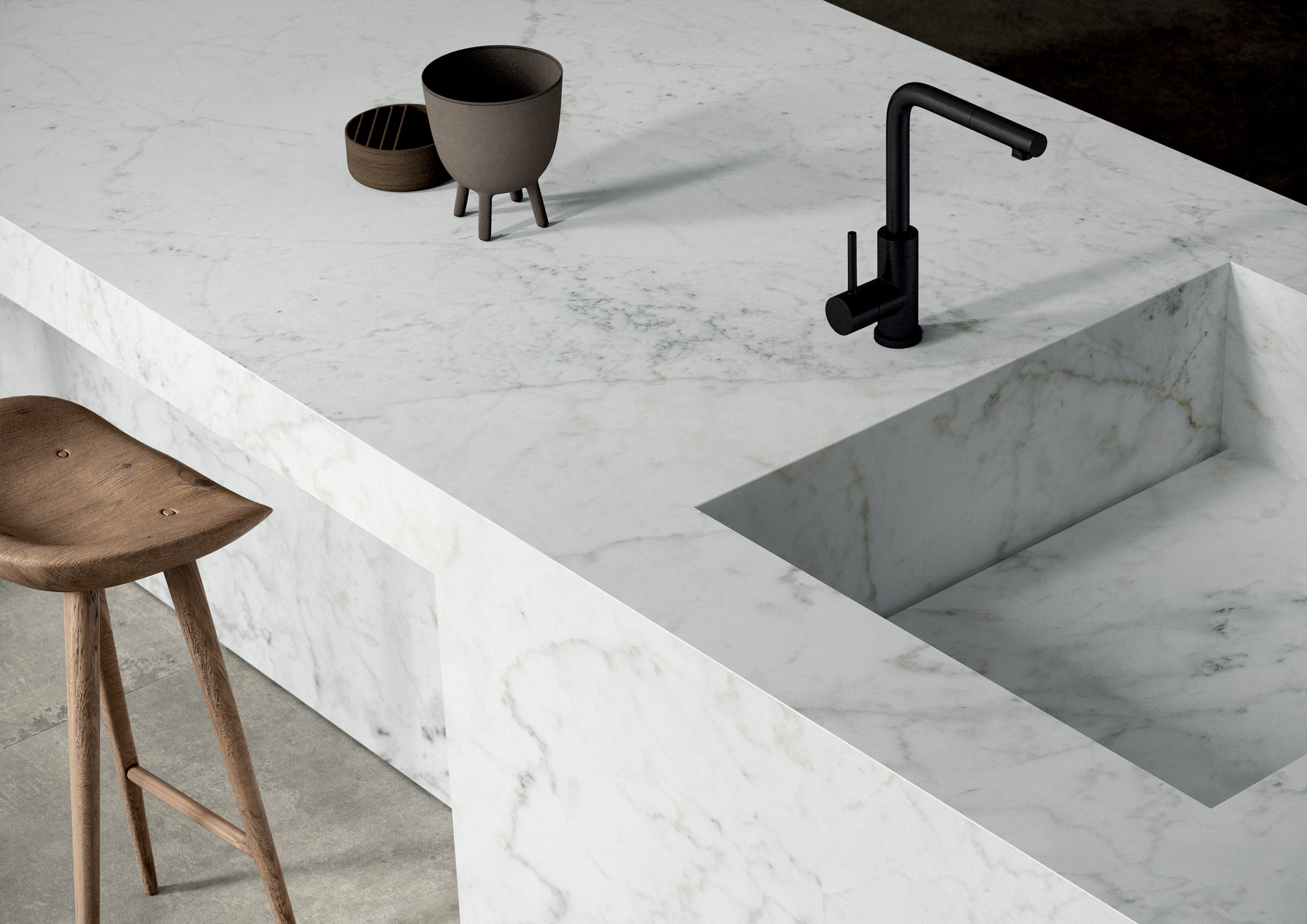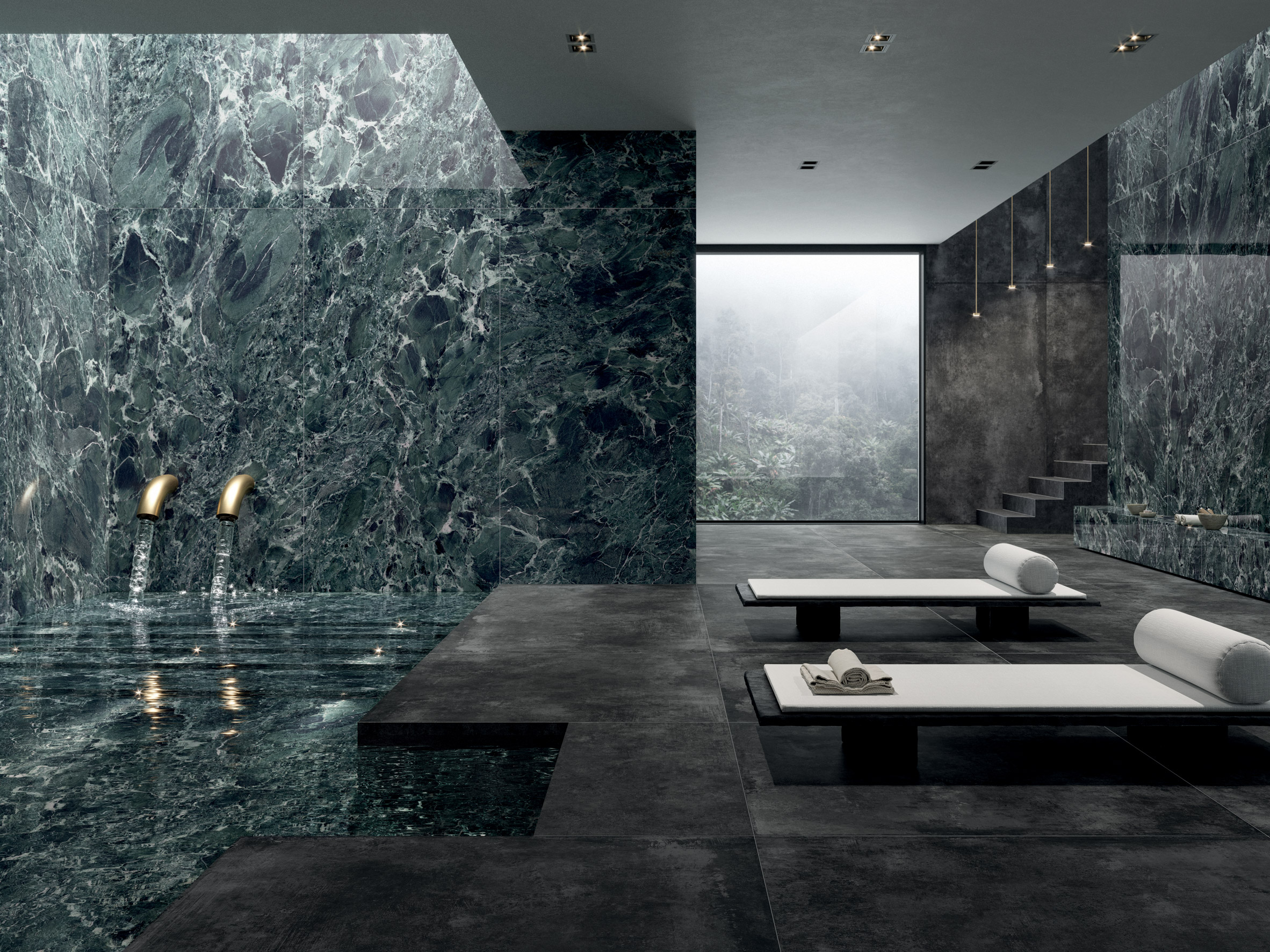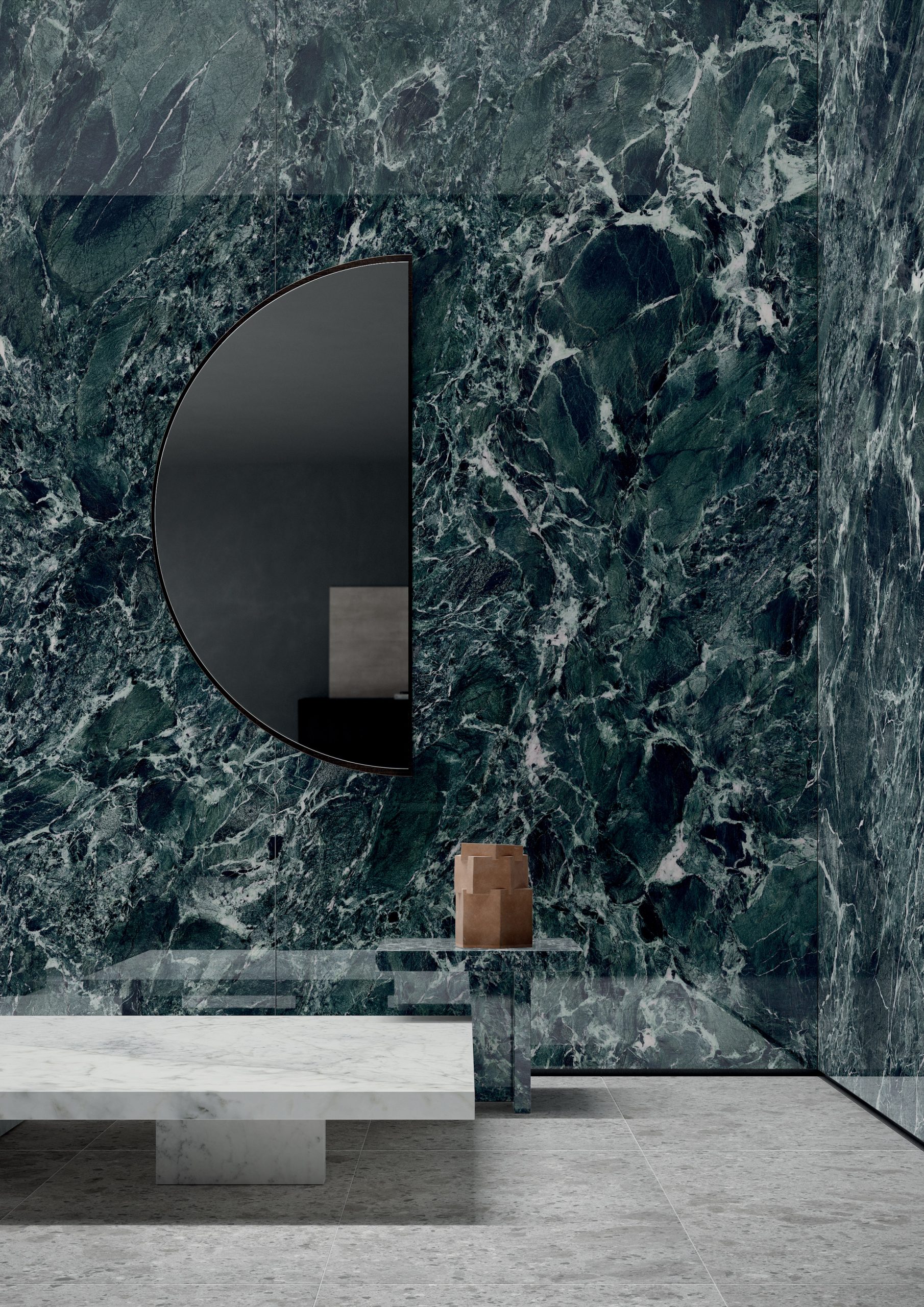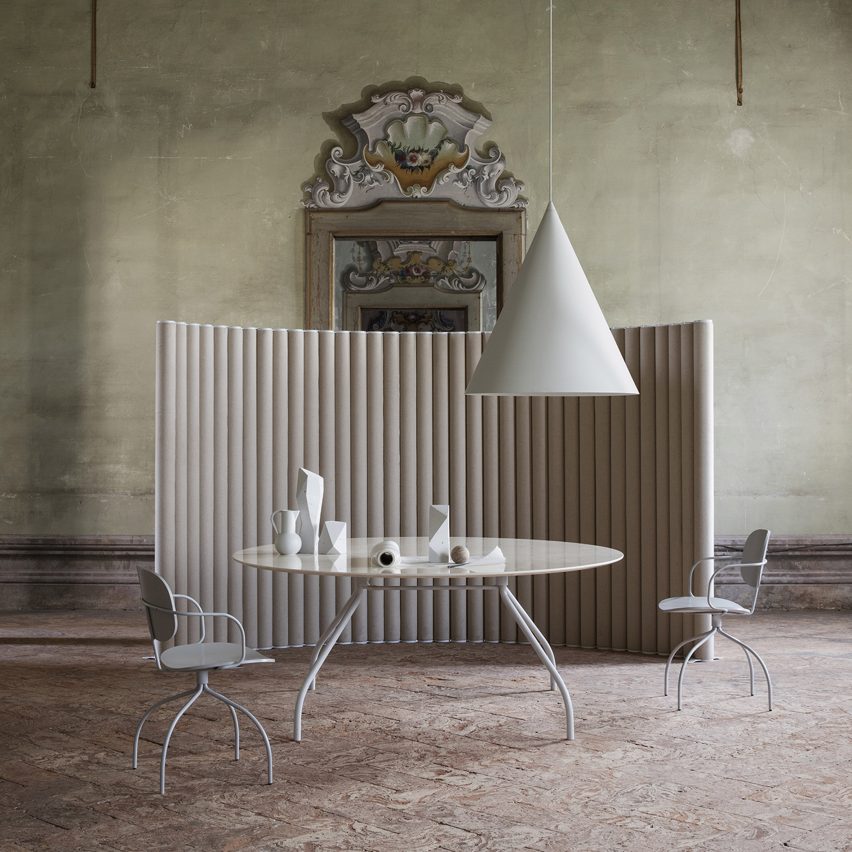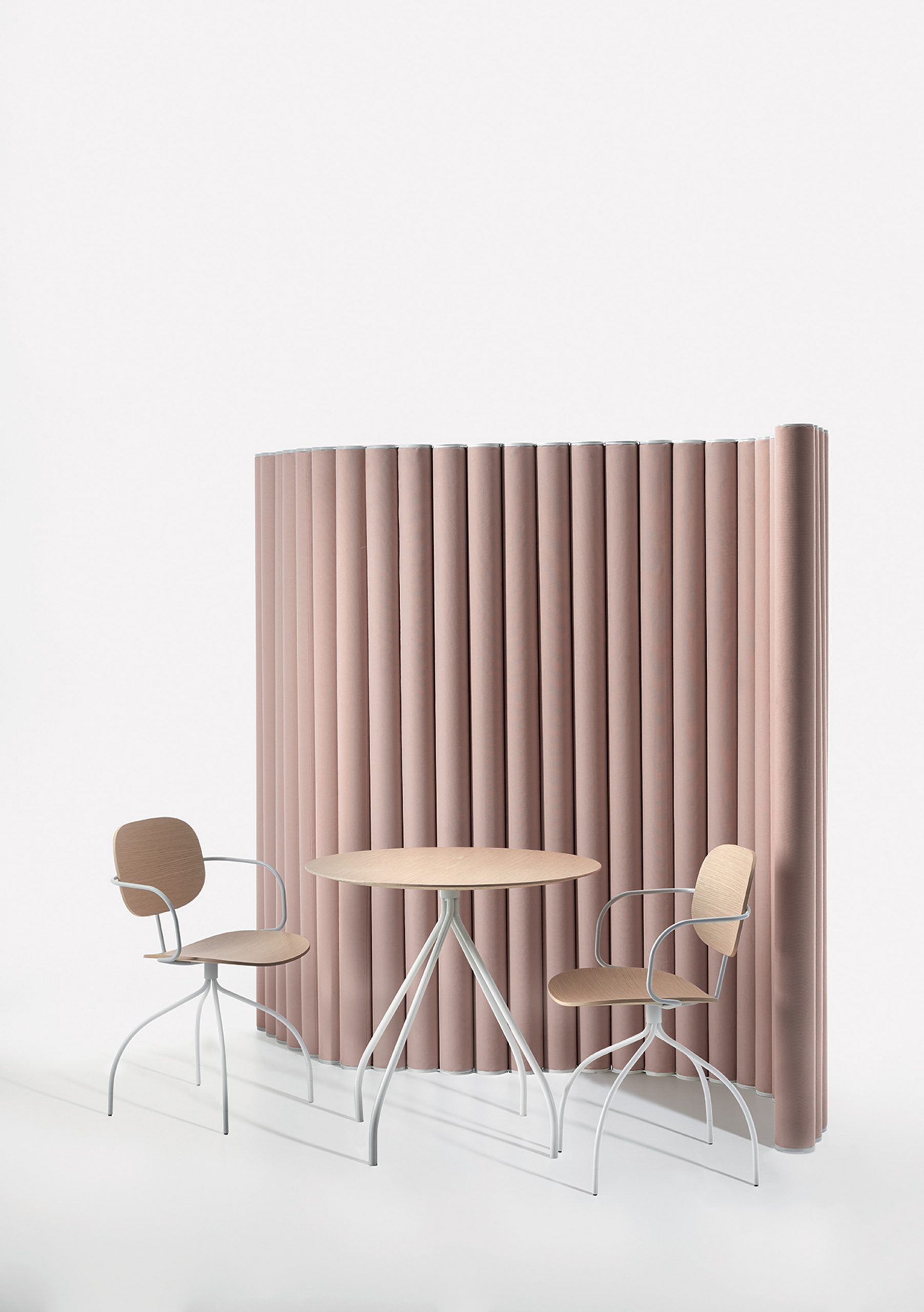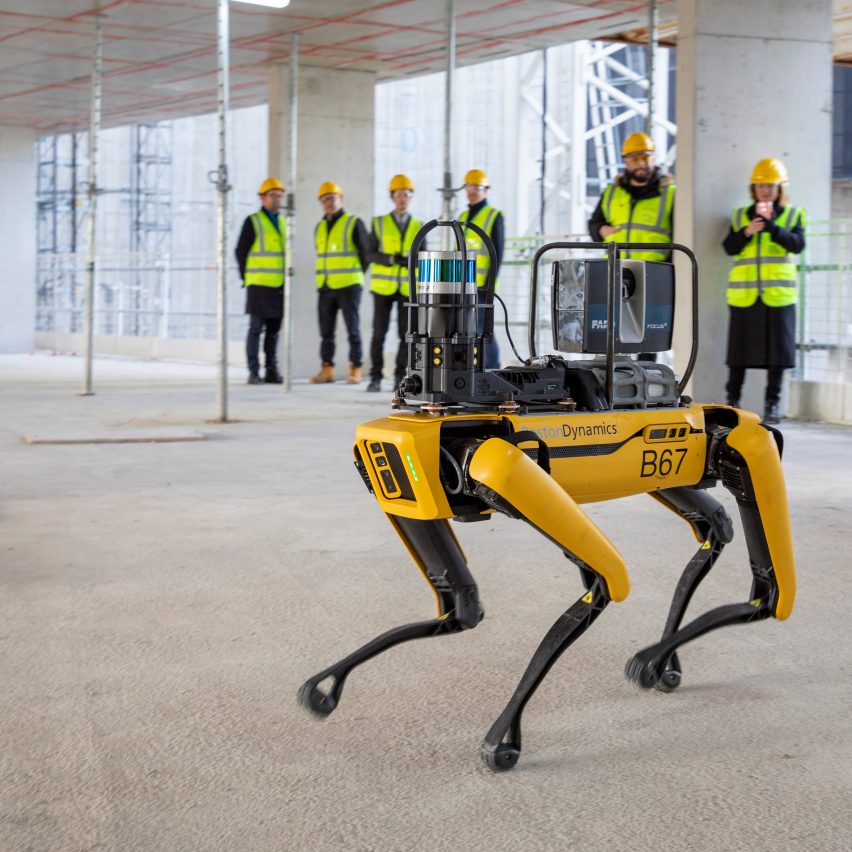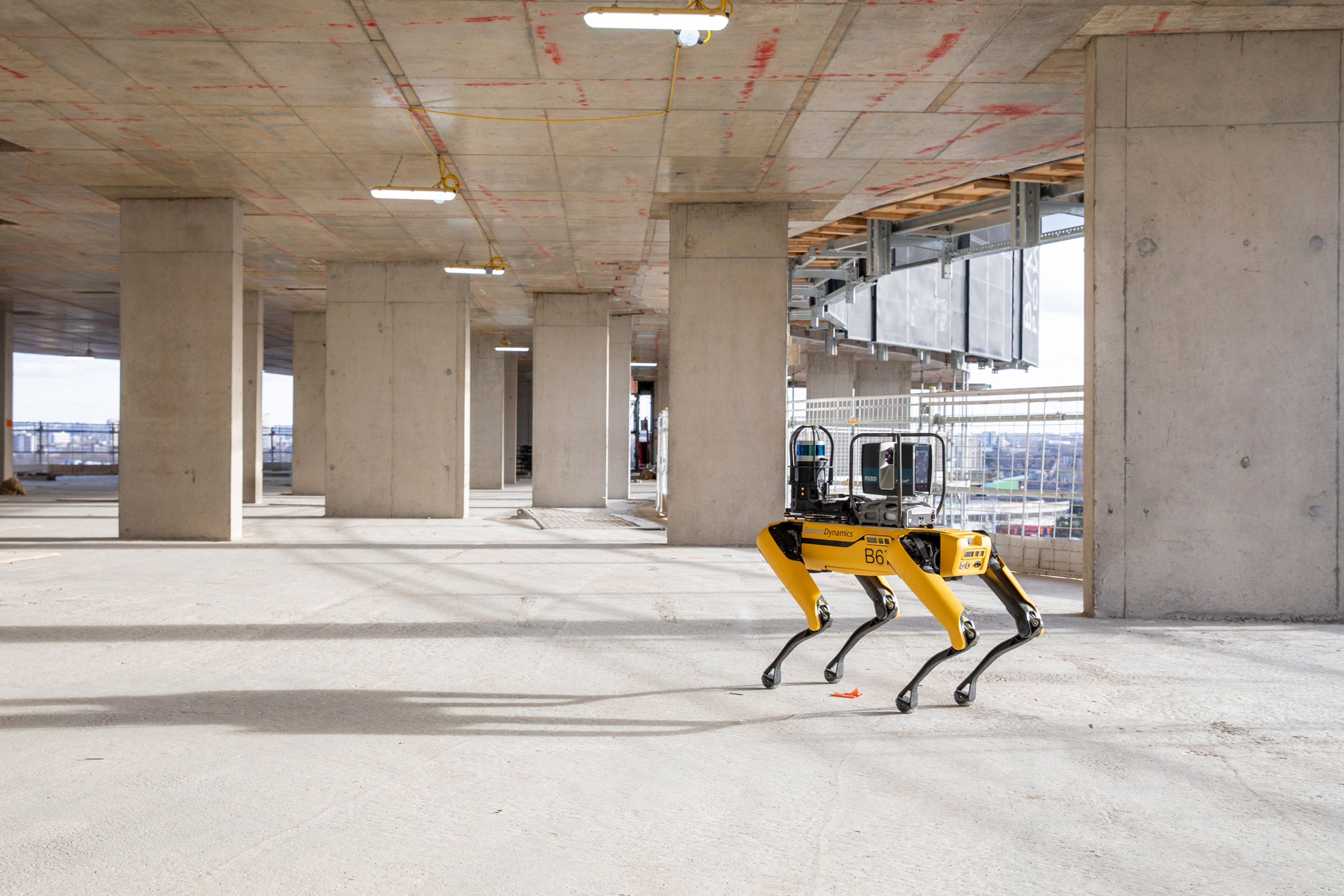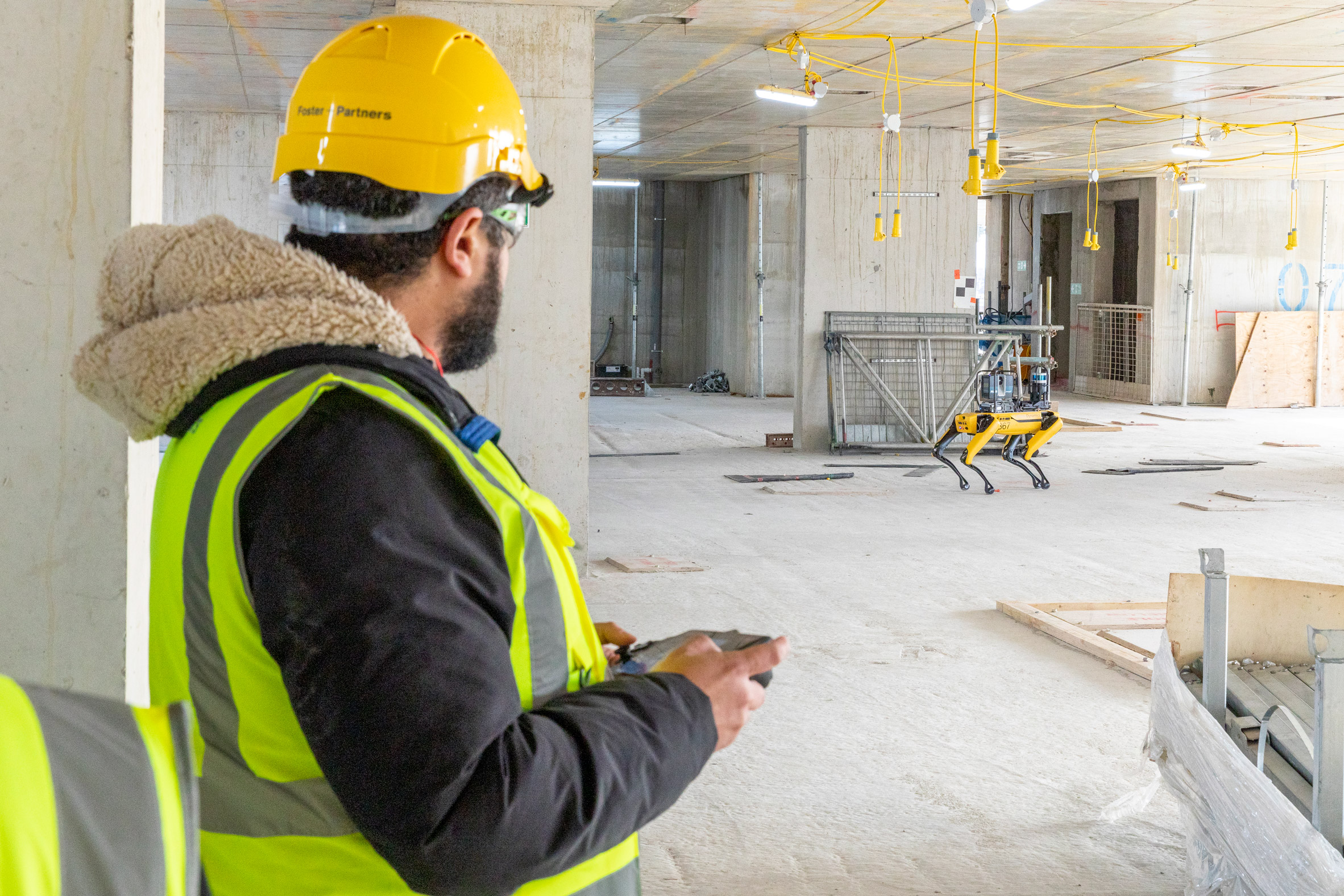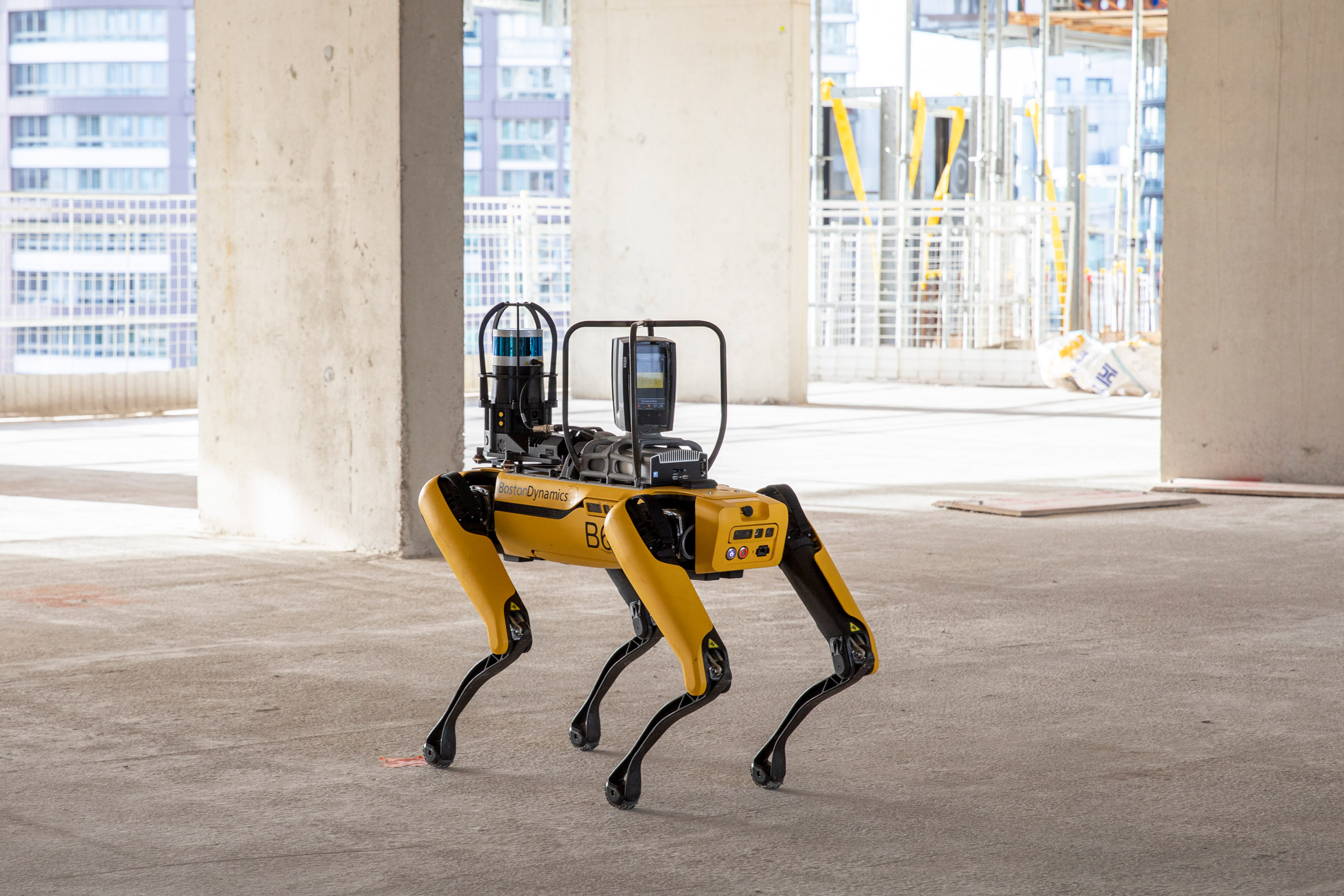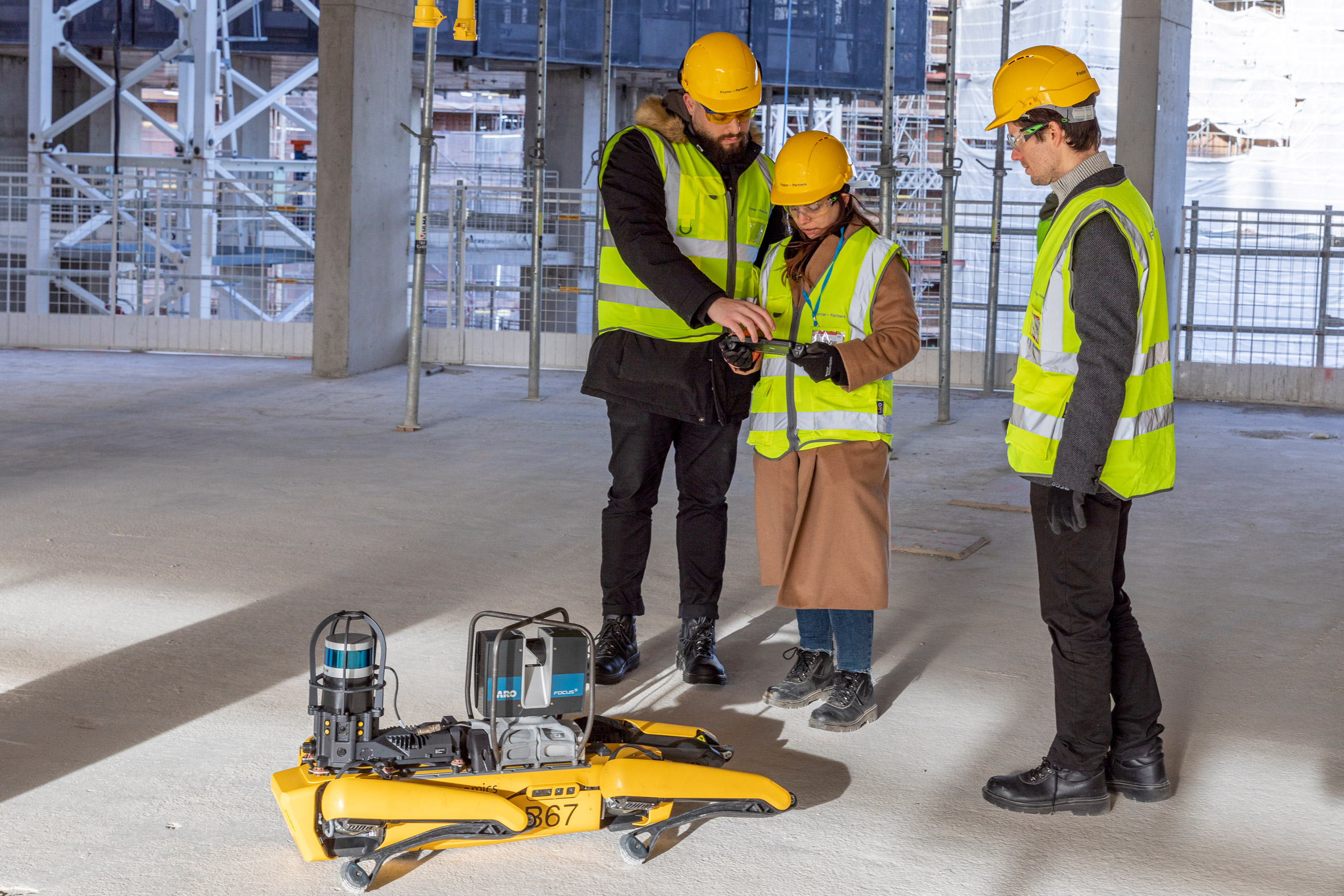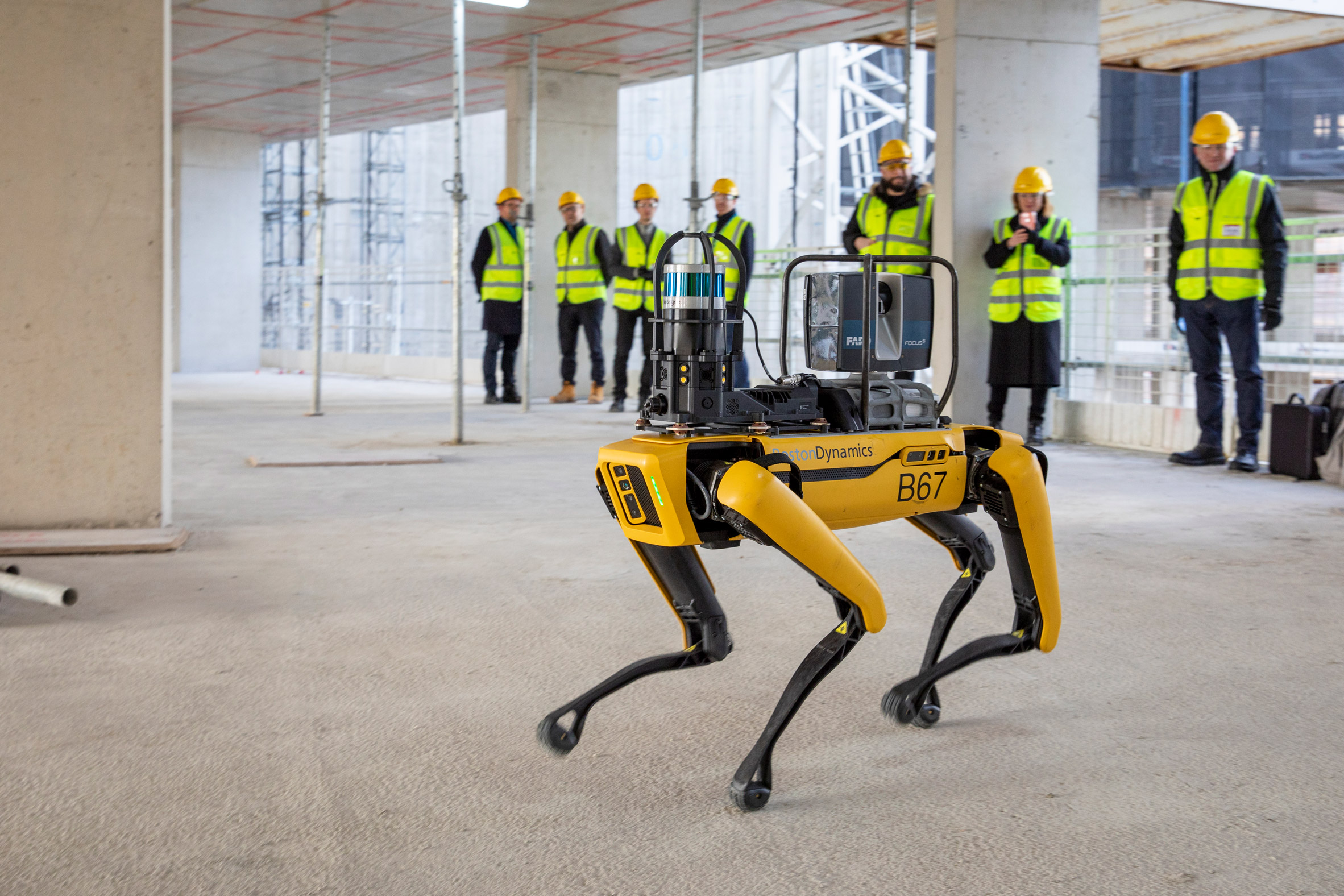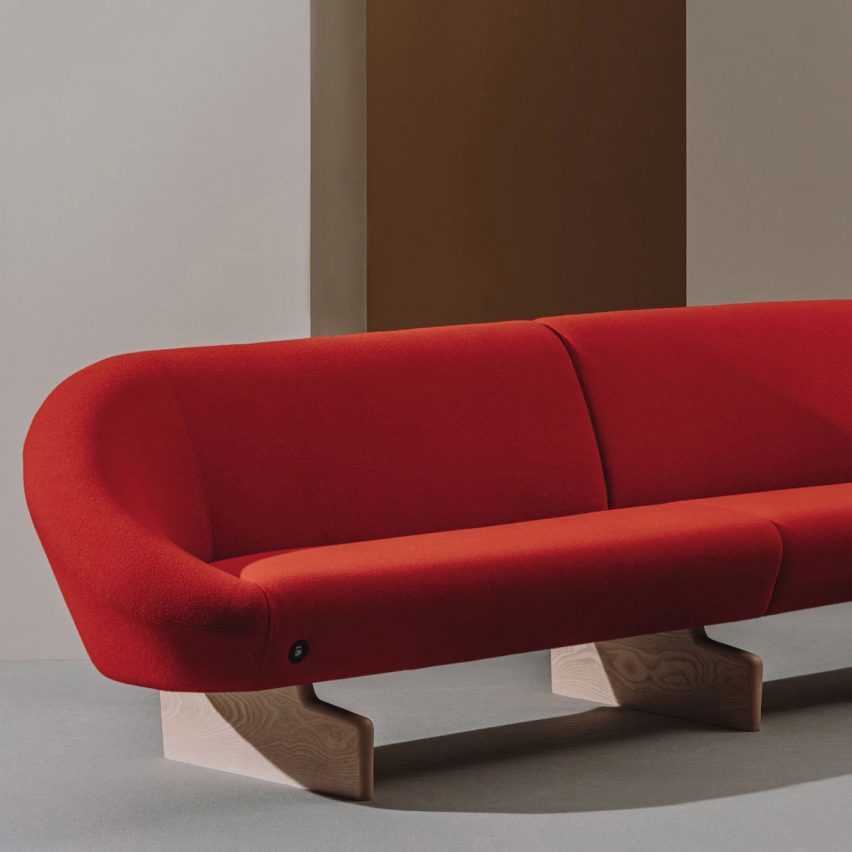
Dezeen Showroom: Furniture brand Andreu World has launched Giro Soft, a modular sofa system created by Alfredo Häberli.
In this exclusive video interview produced by Dezeen for Andreu World, the Swiss-Argentinian designer shared the story behind the product.
The modular design features a series of slender upholstered seats with interchangeable legs that can be joined together to build a larger sofa.
The collection, called Giro Soft, is the result of a collaboration between Häberli and the brand that started before the pandemic.
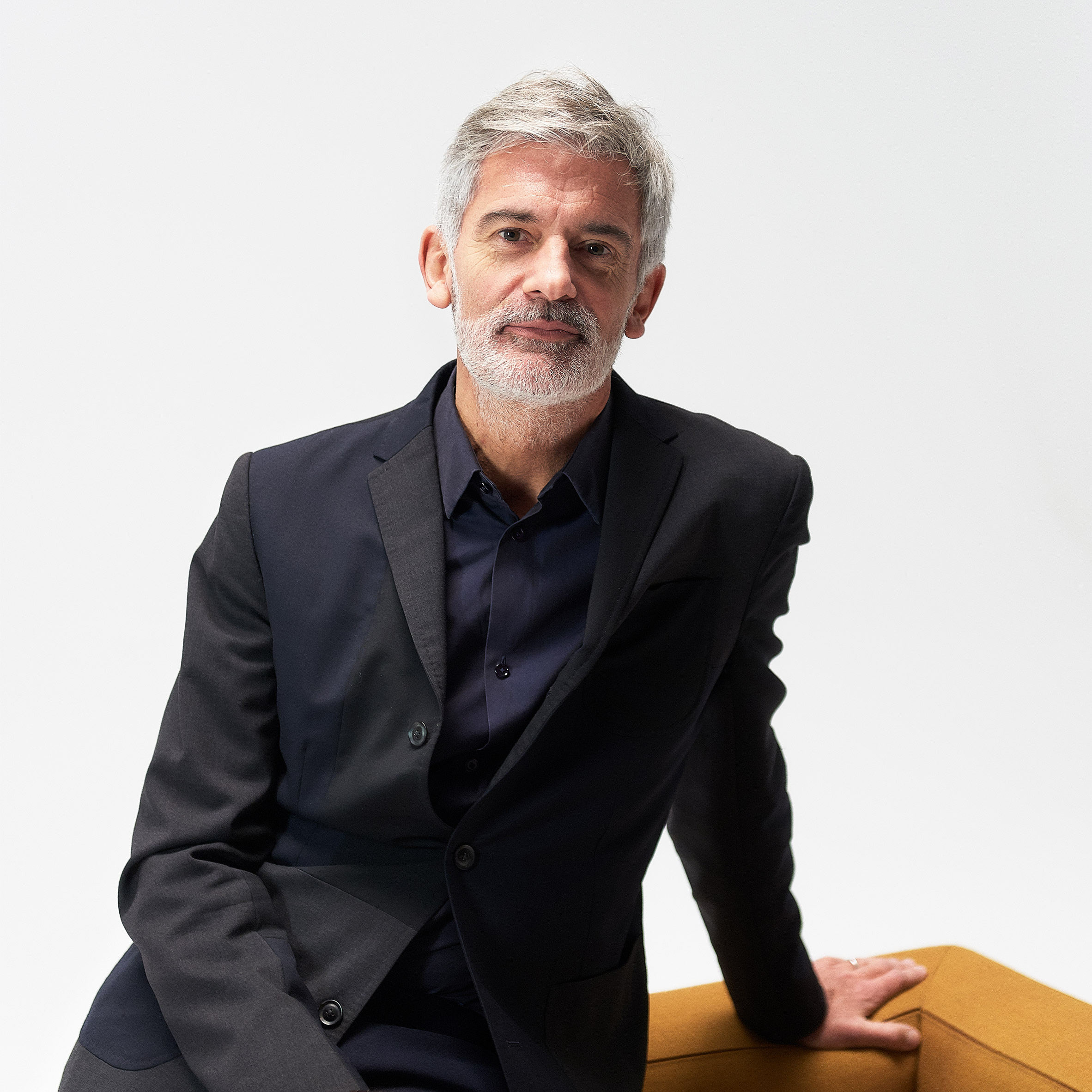
"We had a team relationship from the very first second," Häberli told Dezeen's founder and editor-in-chief Marcus Fairs in an exclusive video interview conducted over Zoom. "We have the same vision,"
"I sent some drawings at 1:1 scale and we immediately started by working on prototypes in 1:1, which for us designers is the most beautiful thing".
The seating modules come in a variety of shapes that feature a combination of straight edges, rounded ends, and 90-degree or 45-degree curves. The latter lends Giro Soft its name, as "giro" means "curved" in Italian.
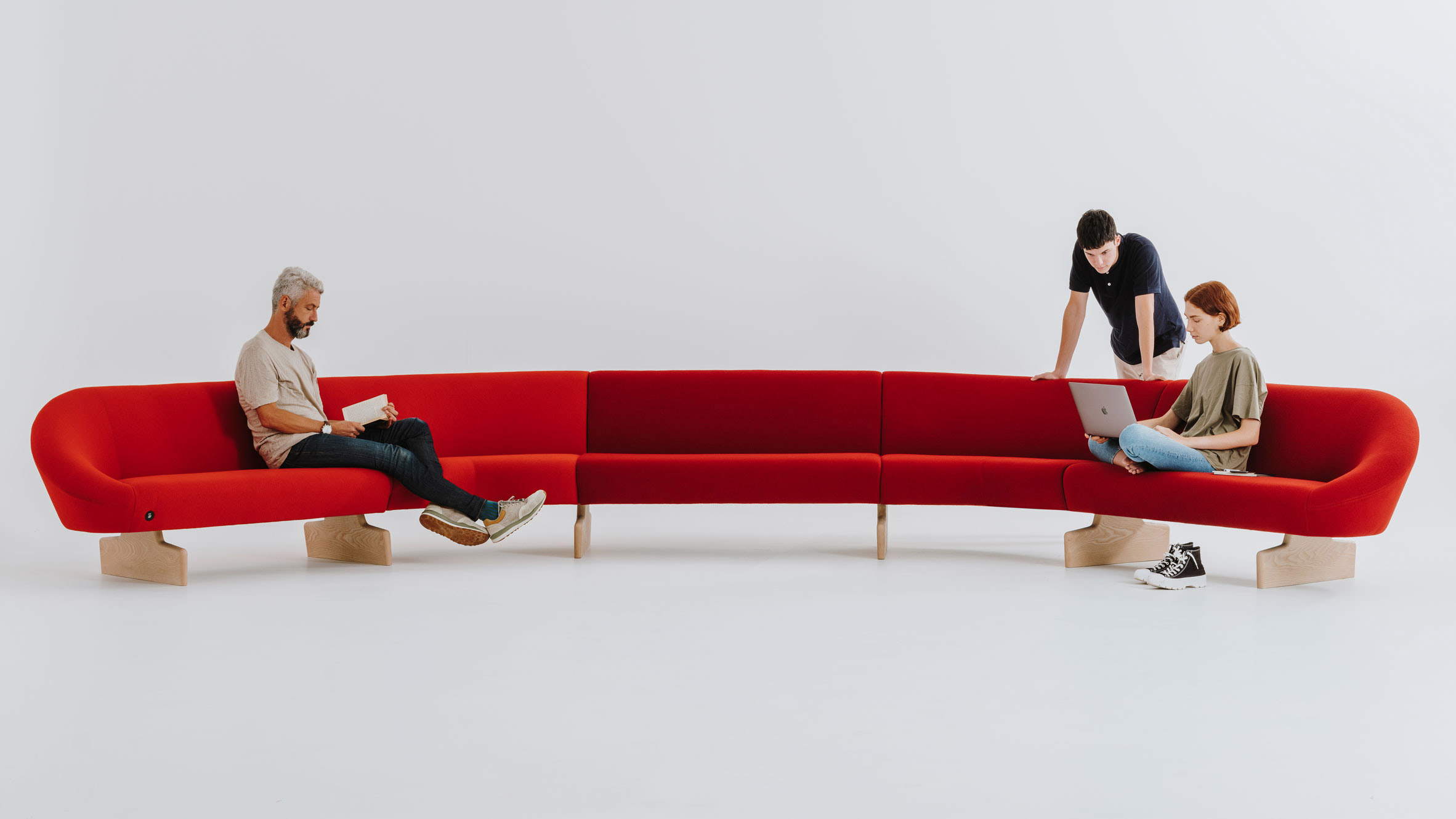
Häberli designed the sofa as a collection of separate, reconfigurable parts to allow users to adapt the furniture to their spatial and personal requirements.
"It's also interesting ergonomically," said Häberli. "It's extremely comfortable to sit on it, to work on it, to relax on it."
Included in the collection is an optional swivelling table that can be slotted between two seating segments.
For use in public spaces, a power outlet can be integrated into the end of a seating module.
A range of legs are also available, including sledge-like supports made from solid ash wood and injected aluminium frames that come in matt or polished, white and black finishes.
These components were designed with both structure and aesthetics in mind, said Häberli, who describes the product's base as "very architectonic".
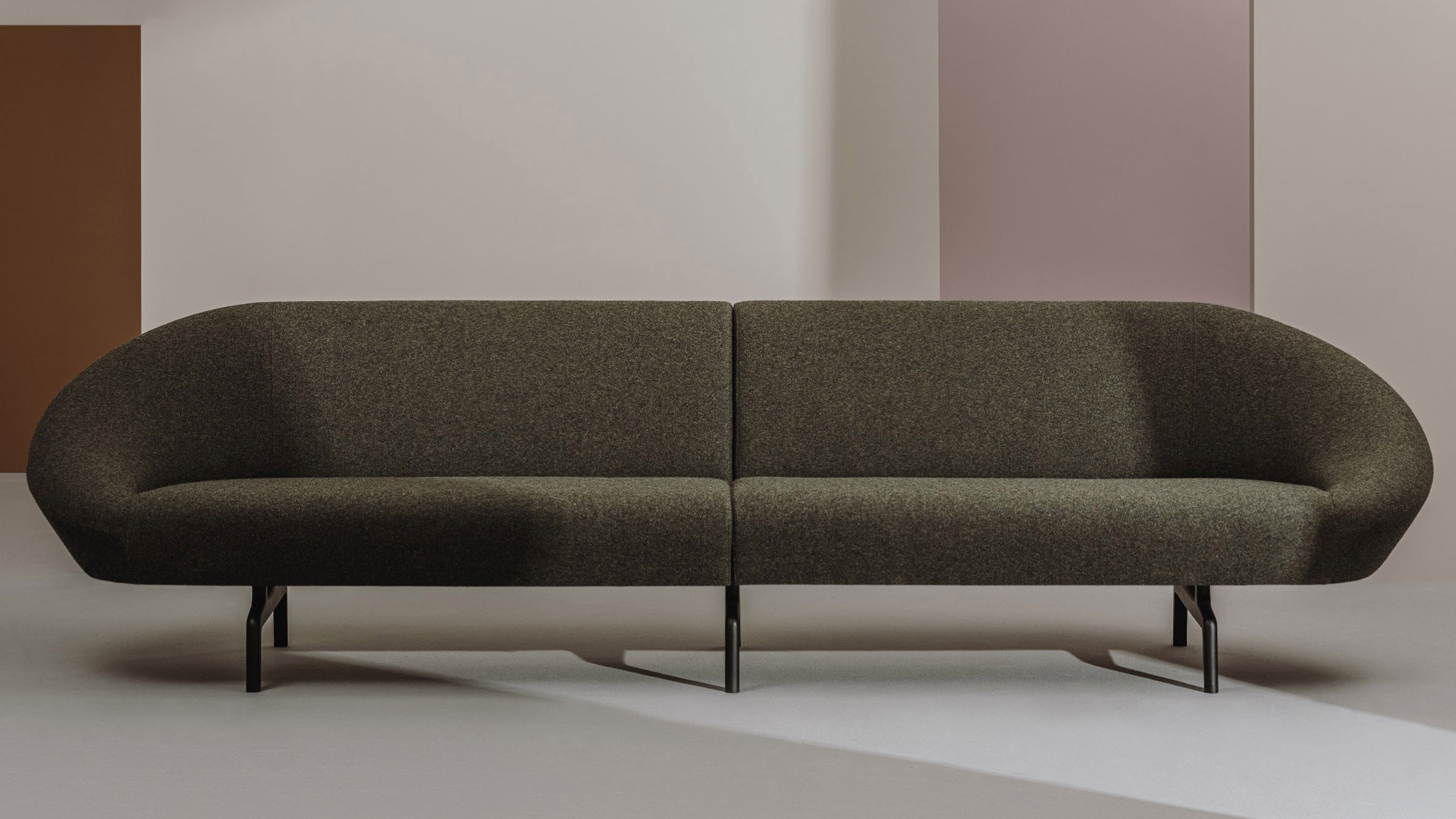
The legs are intended to reduce the amount of materials required to raise the sofa above the floor, thereby giving the sofa a lighter appearance.
"It's like it's flying in a way," said Häberli from his studio, which is located in Zurich in Switzerland.
"The idea came because in a dream I wanted to have the same material as the floor but I cannot come up with 30 different materials," he explained.
"We decided at the end to do it in wood, but the idea was to use the same material as the floor because it makes it even more transparent in a way – and more 'architecture' than 'design'."
Häberli envisioned customers using Giro Soft to break up large spaces as an alternative to a screen or a partition.
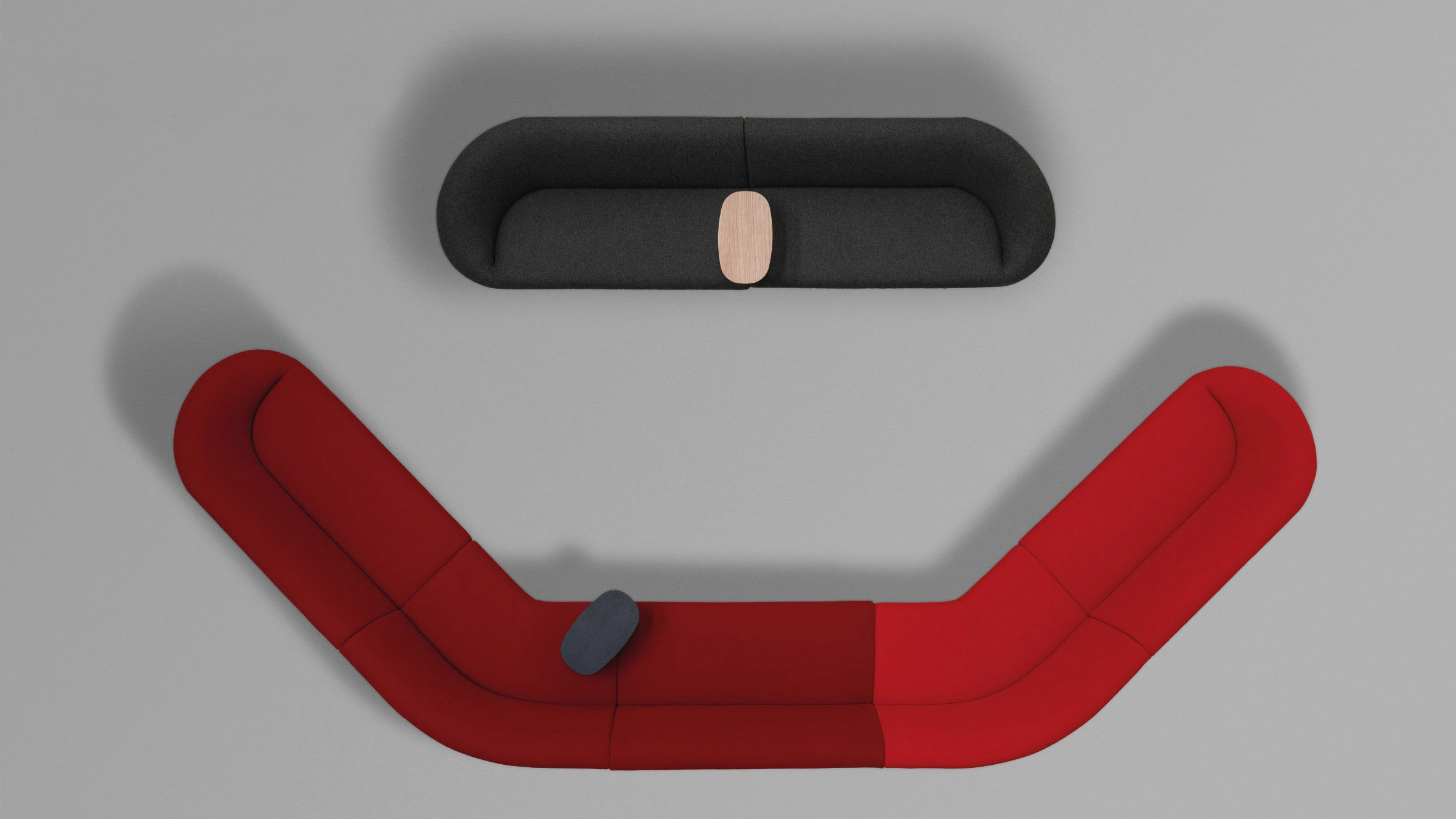
"When I start working I imagine where will I use [the product]," said Häberli. "In this case, it was more in the bigger spaces than smaller ones to use it as an architectural element to divide big spaces."
"I was thinking of hotels but I was also thinking of airports. I was thinking of an office and semi-public spaces where you might have to [architecturally] divide the space."
The sofa system was designed before the outbreak of coronavirus but Häberli argues that Giro Soft could be successfully deployed in a post-pandemic world – particularly in the workplace.
"Yes, we are in a very strange period. When we started, of course, nobody was thinking of [coronavirus]," said Häberli.
"But in the meantime, I have to say it fits perfectly because it's easy to clean. It gives you the opportunity of having enough distance in between the people. And I think these two elements are essential for the future of the offices."
According to Häberli, the pandemic has also created a demand for more comfortable yet functional domestic furniture, as more people are working from home.
"How do we work at the moment? We just work on the dinner table just behind the kitchen," said Häberli. "But if we are really working several days at home, we immediately need more ergonomic items at home."
This video was produced by Dezeen for Andreu World. Giro Soft was due to launch at Milan Design Week in April this year but the annual festival was cancelled earlier due to the outbreak of coronavirus.
Product: Giro Soft
Designer: Alfredo Häberli
Brand: Andreu World
Contact: info@andreuworld.com
About Dezeen Showroom: Dezeen Showroom offers an affordable space for brands to launch new products and showcase their designers and projects to Dezeen's huge global audience. For more details email showroom@dezeen.com.
The post Alfredo Häberli creates "architectural" Giro Soft sofa for Andreu World appeared first on Dezeen.
from Dezeen https://ift.tt/3nfMWW8
